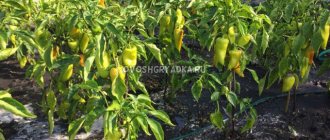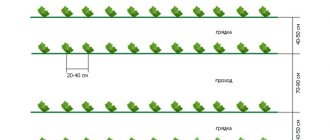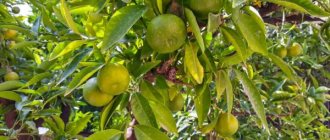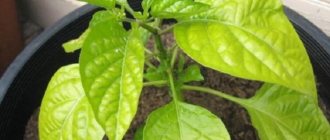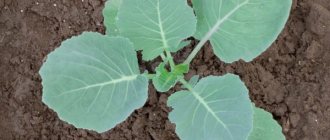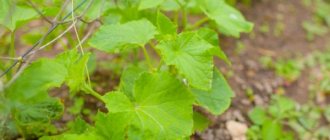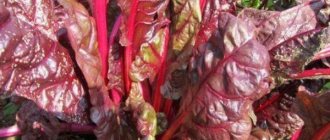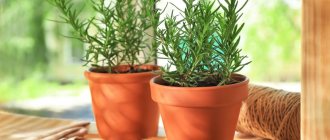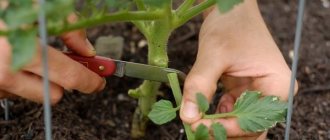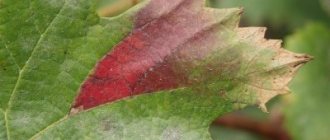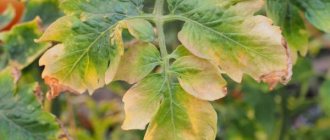It happens that the leaves of a recently healthy and beautiful plant begin to curl. They may curl up, droop or raise the edges, wrinkle, or become deformed in other ways.
There are many reasons for this phenomenon, and they all point to one thing - the plant is under stress. This may be its reaction to unsuitable growing conditions, the first sign of a disease, or the result of insect activity. Let's look at the main reasons for leaf curling in plants.
Soil and air humidity
When the soil is too dry, the plant tries to reduce water loss. Moisture evaporates mainly from the bottom of the leaves, so they curl their edges down to reduce the area of evaporation. At the same time, they become sluggish, and with an acute lack of moisture, yellowish.
If there is too much water in the soil, the leaves will also droop and curl, but usually remain green. Excess water is also dangerous because it causes rotting of the roots and death of the entire plant. It is recommended to moisten the soil only when its top layer (about 2 cm) has dried out. This does not apply to newly emerged seedlings, whose roots are still very short. In addition, you need to take into account that each type has its own optimal irrigation regime.
With increased air humidity, the edges of leaves, especially young ones, curl. This also happens when the humidity is generally normal, but the plants are planted so close to each other that the space between them is poorly ventilated. At low humidity, especially if the weather is hot, the leaves droop, their tips wrinkle, and the edges turn yellow.
High or low temperature
In hot weather (above 27°), moisture from the foliage quickly evaporates, so plants try to prevent its loss and fold the leaves with their edges down. This is especially noticeable on the upper tier. In addition, at very high temperatures (above 35°), nutrients are poorly absorbed, so plants may show signs of a lack of various elements. The same thing happens when the above-ground part is warm and the roots are in cold soil.
It is worth considering that direct sunlight creates a high temperature on the surface of the leaves, and the plant reacts to this accordingly. In addition, some species simply do not tolerate direct sunlight well and prefer diffused lighting.
The cold also causes the leaves to wither and curl. This happens not only when the room temperature is generally low. The same effect is caused by a cold air stream. This happens especially often if the plants are on a windowsill with insufficiently insulated windows. Or they touch a cold surface, such as a wall or window glass. When the weather is cool and damp for a long time, the leaves curl and become thick and dense.
Leaves curled up or down: reasons
If, during the next inspection of tomato seedlings that have not yet been planted in open ground, curled leaves are discovered, the first thing you should pay attention to is the level of humidity in the room. Tomatoes do not like dry air. Next, limit your exposure to direct sunlight, this may be the reason.
There is no need to put seedlings in the shade; this will also not lead to anything good. Direct sun in the morning and in the afternoon is enough, and at the very peak of solar activity, there is a reason to try to create light partial shade for the plants and be sure to ensure good air circulation so that it does not have time to stagnate and overheat.
Check the soil composition. Curling of seedling leaves may indicate a lack of zinc, potassium or calcium. Perhaps it's time to feed the seedlings.
Lack or excess of nutrients
Sometimes leaves curl due to a lack of nitrogen, but the main symptom in this case is their pale color. They also become sluggish, and the veins and surrounding areas turn yellow. This is first noticeable on the lower leaves, and then on the upper ones. The plant does not grow green mass well, its stems are thin, and its foliage falls off early. With an excess of nitrogen, the leaves, on the contrary, are juicy and bright, but at the same time they curl into a ring, and the upper part of the stem is disproportionately thick.
With a lack of phosphorus, the leaves curl with their edges down and take on a dome-shaped shape. Moreover, their color is dark green, with a bluish or grayish tint. In case of acute phosphorus starvation, they are partially colored purple or violet. As with nitrogen, symptoms appear on the lower leaves first.
If a plant lacks potassium, its lower leaves become wrinkled, their edges and tips turn yellow and curl. In general, their color is bluish-green and dull, then brown spots appear, especially at the edges. The stems are thin and weak.
With a calcium deficiency, symptoms appear on young leaves. Their side edges curl upward, and the tip sometimes bends downward in the form of a hook. The leaves themselves are small and yellowish, and blossom end rot often develops on the fruits.
Leaves also curl when there is a lack of magnesium, boron, zinc, copper and molybdenum.
Why can tomato seedlings have curled leaves?
If we divide the causes into two large categories, it turns out that leaf curling can be a consequence of improper care or the manifestation of a disease. To understand what is happening, first of all, you should carefully examine the plant. There may be other symptoms. Pay attention to every little thing, be it a change in the color of the leaves, partial drying out or blackening. Focus on the direction of curling the sheet - up or down. Everything is important.
In parallel with diagnosing the plant, check whether the care is organized correctly. Let us list in order the factors that can affect the change in the position of the leaves.
Air temperature
Often the reason for leaves curling in the daytime or morning is overheating of the plant. The tomato reacts in a similar way to sudden temperature fluctuations in the air. If, for example, it is cool at night and the sun is scorching during the day, the leaves may curl a little, and when the temperature normalizes, they will return to normal.
You can try to eliminate this reason by frequent ventilation if the seedlings are still in a greenhouse or on a loggia. If the plants are faced with unfavorable weather conditions in the open ground, nothing can be done to help. The only thing you can try is to shade each bush at midday with specially made shields made of thin plywood or thick cardboard. An easy option is sheets of newspaper strung on a stick stuck in the ground.
Watering
Improper watering is probably the most common mistake novice gardeners make. Tomatoes are incredibly sensitive to both drought and waterlogging, and both factors can be detrimental to the plant.
Subtleties of watering:
- at air temperatures up to +25°C, it is enough to water once a week. Once this temperature is reached, the frequency of watering increases to 2 times a week. In the summer heat, when the temperature is +30°C and above, tomatoes are watered up to 3 times a week;
- watering should be plentiful. The regime - often, but little by little, is completely unsuitable for the plant;
- Even on the hottest days, water should not stagnate in the root zone.
Tomato leaves may curl from excess moisture. If you find boat-curled leaves, first check the condition of the soil and the operation of the drainage system.
There is a high probability that the soil dries out at the top and stagnates at the roots. The same effect can be observed if for some reason the plants are left without watering for a long time.
Unregulated application of fertilizers
Most often we are talking about exceeding the recommended dosage. In pursuit of a high yield, it happens that even experienced gardeners make this mistake. An excess of mineral elements affects the condition and appearance of tomatoes.
| Substance | Signs of overapplication |
| Nitrogen | Lack of flowering with active growth of green mass. Curling of leaves at the crown of the plant. |
| Zinc | The trunk and lower leaves acquire a purple hue, uncharacteristic of a healthy tomato. The leaves curl down slightly. |
| Manganese | The leaves become unnaturally bright, the structure of the plate is leathery, and in places heavily wrinkled. |
If the soil is oversaturated with nitrogen, the situation can be corrected. Carry out unscheduled feeding of plants with wood ash. It is best to apply by watering. You will need a large glass of ash for a bucket of warm water. Mix the solution and water the seedling bushes at the root. This measure will help normalize the level of nitrogen in the soil and saturate the tomatoes with potassium and phosphorus.
If planting is carried out in depleted soil that has not been fertilized since the fall, tomatoes will certainly respond to the lack of nutrients in the soil with slow development, stunted growth, falling flowers, and a small harvest.
| Substance | Signs of Deficiency |
| Phosphorus | The leaves change color from normal green to a diseased, grayish color. Twist the tube downwards. |
| Potassium | The edges of the plates begin to turn upward. |
| Copper | The first symptom is yellowing of the leaves. After some time, withering and complete falling off begin to occur. |
| Iron | The edges of the leaf blade bend downwards, and the plant wilts. |
| Bor | The first sign is redness of the veins. Then the leaves begin to curl down and darken. |
| Calcium | The leaves curl upward and the fruits may become rotten. |
It is not difficult to avoid all of the above points in growing tomatoes. It is enough to strictly follow the recommendations of fertilizer manufacturers. Fertilize in a timely manner and in the required amount.
Root damage
Quite a common occurrence. Damage to the roots can occur not only from the plant being affected by some disease, but also from mechanical stress during the process of replanting or loosening. If, on the first day after planting seedlings in open ground, severe curling of the leaves is observed, most likely there has been damage to the root system of the tomato.
You can try to correct the situation with additional fertilizing in reasonable doses or by watering with the addition of a stimulant to the water.
Stepsoning
The procedure is usually carried out on a regular basis. Excessively overgrown side shoots consume a large amount of incoming nutrients, which inhibits the development of the main shoots and slows down the ripening of fruits.
Once every few days, side shoots should be carefully broken off with your fingers, 1-2 pieces at a time, not allowing them to grow more than 6-7 cm.
The tomato is very sensitive to this procedure and almost always reacts by curling its leaves, which after some time return to their normal state.
Problems with the root system
The roots can be injured when transplanting seedlings or when pulling out nearby weeds. This leads to temporary curling of the leaves, but usually the plants recover quickly after this. A more serious reason is damage to the roots by pests, such as wireworms or moles. Because of this, the plant dries out, which is noticeable at the initial stage by the curled leaves.
Leaves may also curl due to underdeveloped root systems. This happens if the plant container is too small or the soil is very cold, resulting in poor root development.
Rotting of the roots is another reason for the curling of leaves. The first symptoms appear on older leaves. To avoid causing rot, it is better to water the plants at least 2-4 hours before dark.
Why do tomato leaves curl up in a boat?
If the tomato leaves are curled into a boat, then there are only two culprits:
- Potato aphid. She sits on the stems and curls the foliage upward. It is very small, but you can see it. It's not difficult to deal with it. You need to spray the tomatoes with any of the preparations for the Colorado potato beetle (Confidor, Tanreg, Iskra). There is no need to overuse spraying. It is noteworthy: the foliage will no longer straighten and the fly will also sit. But it will already be dry. And the new leaves will be normal.
- Weather. Very cold nights and very hot days are contraindicated for tomatoes. If the air temperature during the day is above 35 degrees, the leaves will curl into a boat. The soil is cracking and literally tearing the roots apart. The soil should be mulched with straw or husks, and the leaves should be sprayed with Novosil with the addition of microelements.
Tips for the garden, vegetable garden and flower garden
Planting days in July 2021 in the Urals
Care for gooseberries all season so that the berries are large
Garden pests living in the ground photos and names
Pests
Some insects damage the leaves and cause them to curl. These pests include various types of aphids, spider mites and whiteflies. These insects hide on the underside of the leaf and leave behind small dots - puncture marks.
The foliage loses color, withers, curls and falls. Whiteflies and aphids secrete a sticky substance, and spider mites produce a thin white web that is not always noticeable at first.
Typically, insects attack young leaves first, as they are more tender, juicy and easier to pierce.
Diseases
Some viruses, along with other symptoms, cause deformed leaves. Among such diseases are beet curl virus, tomato yellow curl virus, potato leaf curl virus, etc.
With bacterial canker of a tomato, the edges of the lower leaves turn yellow, they wither and curl, then darken and dry out. On the cut of the stem, a change in color to light brown or yellow is noticeable. Another bacterial disease, stolbur, can also cause leaf deformation.
In some trees (peach, nectarine), due to a fungal disease, the leaves look twisted and thick, their color changes to red or purple. Over time, a white coating appears on them, they can turn black, dry out and fall off.
Mechanical damage
While weeding and loosening with a hoe, the vegetable grower accidentally damages the surface roots of the tomatoes. The plant reacts by curling its leaves. To maintain tomatoes, water them with “Kornevin”, “Kornerost” or another stimulating drug.
Belated breaking off of the stepsons, when their length exceeds 5 cm, injures the plant, to which it also reacts by twisting the foliage. The plantings are revived by spraying with the preparation “Zircon”.
The last reason why tomato leaves curl upward may be disease or pest damage. For stolbur, bushes are treated with “Phytoplasmin”, and bacterial cancer is treated with Bordeaux mixture. Tomatoes are treated against pests with commercially available insecticides.
Other reasons
When pruned or pinched excessively, the plant experiences severe shock, causing its leaves to curl. This usually goes away after a few days, but it is still advisable not to remove too many shoots at one time.
When treating a garden or vegetable garden with herbicides, some of the chemicals can get on the crops and cause the leaves to curl. If they are slightly damaged, they will recover on their own, but it is better not to allow this to happen. In addition, you should not water the plants with the same tool that was used to spray the weeds with chemicals. It is also not recommended to use grass treated with herbicides as mulch. This applies to continuous action preparations that are dangerous for all plants.
How to treat tomatoes for leaf curl
How to treat upward curling of leaves in tomatoes if the cause is pest infestation?
To treat tomato bushes from pests do:
- garlic solution. Take 1 liter of water and 150-200 g of chopped garlic. Keep for 5 days. This is how garlic concentrate is obtained. To treat tomato bushes, dilute 1-2 tablespoons of concentrate per 1 liter of water. Then the leaves of the plants are sprayed generously;
- tincture of wormwood. The concentrate is prepared by infusing 500-650 g of wormwood in 5 liters of boiling water for 2-3 days. To irrigate the bushes, mix 9 liters of water and 1 liter of concentrate;
- tobacco tincture. Chopped tobacco (about 200 g) is poured with boiling water (5 l) and left for 1-2 days. The bushes are sprayed with the solution (you can add 100 g of laundry soap).
Attention! Experienced tomato growers advise repeating the treatment after 3-5 days.
